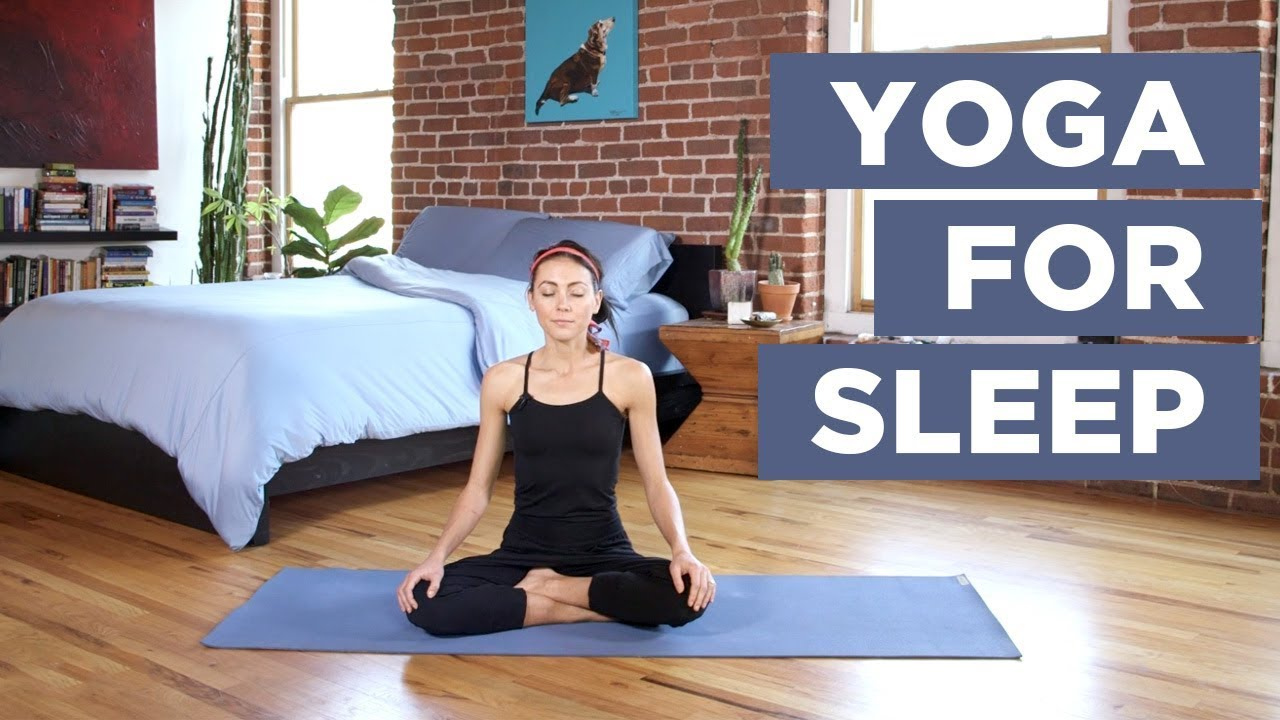Does it become difficult to fall asleep? Do you find yourself waking up at odd hours and never returning to sleep? Yoga is not just used for relieving stress before bedtime; actually, many postures can help you fall asleep and keep you asleep. Even a few minutes of deep mindful stretching with slow, deep breaths could enhance your sleep quality. Not all asanas are in the same calming category, so it should be understood which yoga poses are best for bedtime use for an effective part of a calming bedtime regimen.
What is yoga for bedtime?
This practice is performed to calm and relax stretched postures so that the body is fully relaxed and stretched before sleep is attained. The yoga for bedtime practice does an excellent job of squeezing out tension and relaxing the nervous system, which helps you sail quickly through sleep and wake feeling fresh the next day.
Why Do Yoga Before Bed?
Yoga at bedtime is known to significantly improve life and well-being, helping one feel relaxed in both body and mind for better, deeper sleep. Yoga poses are very effective in relaxing both body and mind, reducing worry and anxiety. Holding just one gentle stretch with deep breaths often advances the quality of sleep and gives the feeling of a refreshed and rejuvenated self in the morning. Yoga, by numerous studies in medical literature, shows its benefits—useful in quality, quantity, and coziness of sleep—decreasing stressors, calming your mind, and regulating oxygen intake.
The significance of yoga to sustained and deep sleep is often understated. Coconut sleep is necessary for well-being: our metabolism, restoration, physical and mental health; not to mention that lacking it could mean the possibility of having dangerous health problems that lead to serious consequences, if not killing. Only after careful observation do we come to realize that if sleep is not the best way to take stress off our minds and performance, then nothing else on the planet can do it.
Two weeks should be realistic before you can noticeably value yoga’s positive impact on your sleep. Yoga every night would be most effective in helping both the quality of sleep and the issues around falling asleep. This should be an easy time to keep regular yoga because you are trying to make a nice exercise routine; however, do not expect or come down too hard on yourself. If change doesn’t happen quickly, allow yourself to regain your instinct without dwelling.

What yoga positions are best for sleep?
Hatha Yoga is a great way of making the mind and body calm and having a good sleep by allowing you to sleep more deeply at night. With many possible yoga for sleep poses available, it can be difficult to figure out which of them lets you sleep more deeply and have better quality sleep. Focus on restorative poses, gentle stretches, and relaxing poses. These are primarily hip openers and forward folds, but twists and side bends will also be calming and balancing. Of all the beginner poses, choose the easy, simple, and feel-good ones with plenty of space for deep breaths. With some practice of these sleeping poses, healing should be found.
Which poses are best for sleep?
- Cat/Cow – Be in flow between these two positions to release tension along the spine and to equilibrate the nervous system. Several repetitions may be done until your body feels soothed, warmed, and ready for more intense poses.
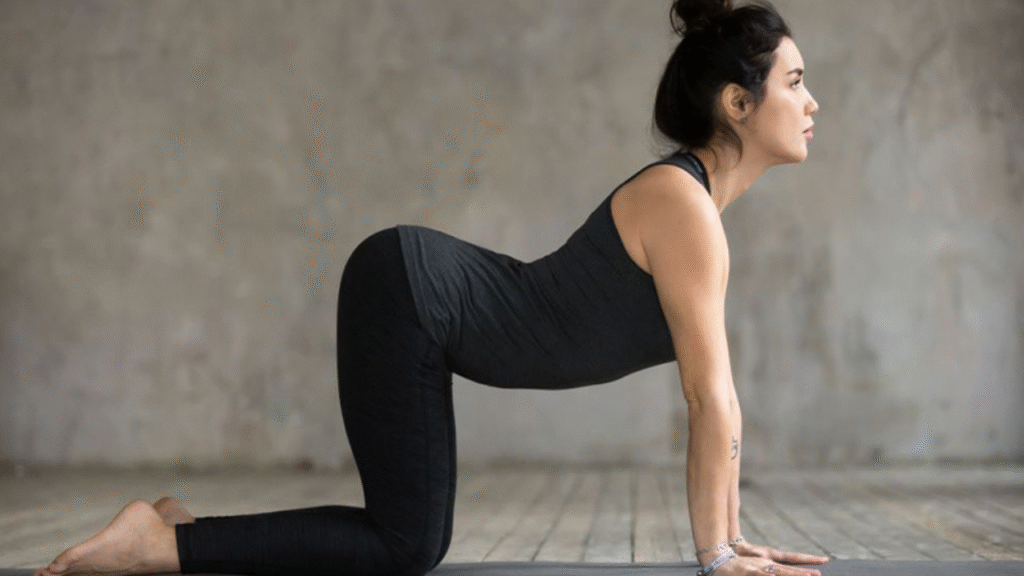
- Downward dog-As a classic asana, this is one of the best ways to build upper body strength for good stretching of the leg and back muscles, especially for those who have sedentary work at their desks all day. It helps in balancing the mind and emotions and is ideal for letting go of a long day’s work.
- Child’s pose-It’s a simple pose but very comforting for stretching the back of the legs and the lower back. Maintain this position for several breaths to rest, integrate, and soak up the practice benefits.
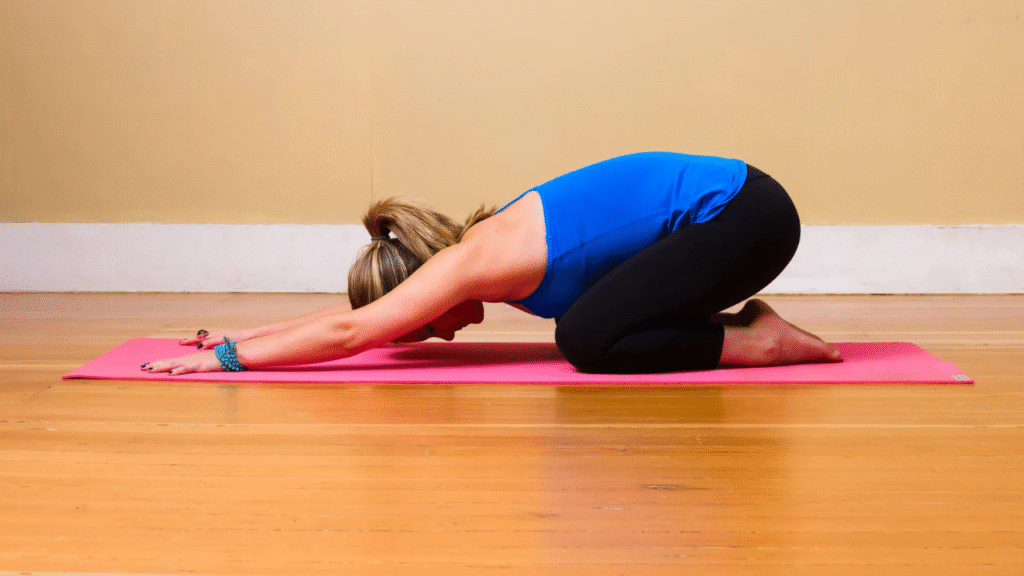
- Sphinx pose-This gentle backbend decompresses and relieves tension from the lower back while opening the chest to encourage an emotional release. It has a mildly energizing effect, so keep it towards the beginning of your nighttime sequence.
- Pigeon pose-After a long workday, this deep hip-opening stretch promotes the flooding of stress, worry, and anxiety. A vibe of profound emotional awakening will come after a while in the pose. Exit early if you feel it’s heightening anxiety in the practice.
- Dolphin pose-This pose is paramount for relieving physical and emotional anger and frustration that is stored in the shoulders and upper body.
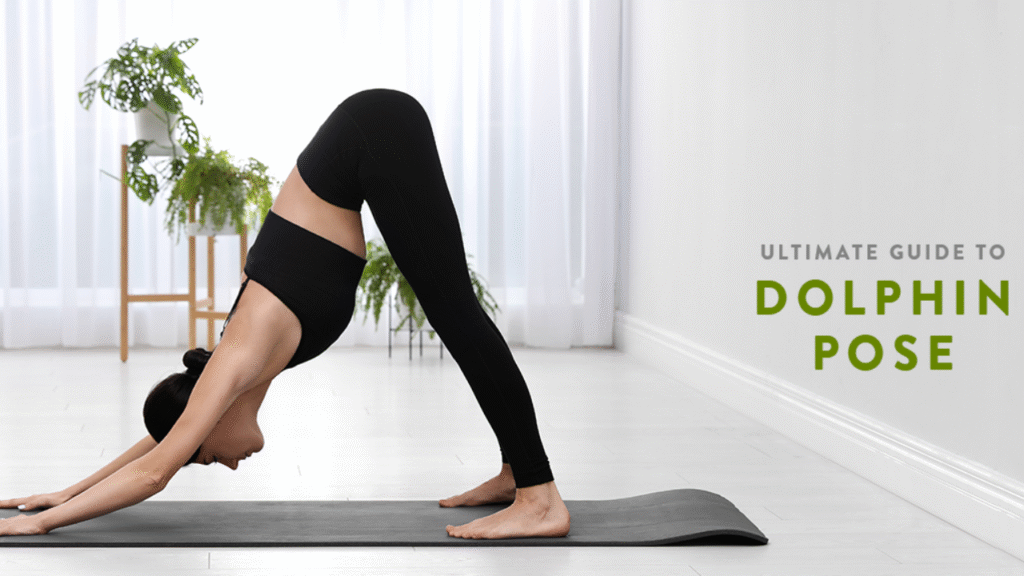
- Seated Forward bend-With its soothing energy, this asana opens up the entire lower back and hamstrings while energizing the digestive tract and calming the spirit.
- Seated Head-to-Knee. This is a pose for the opening of the hips and stretching of the hamstrings in varying degrees of application. It helps in balancing energy between the hips and the spine.
- Seated Yoga Seal-This pose is a huge stretch for the chest and ribcage muscles, assisting in balancing emotion and increasing lung capacity. This pose also stretches the spine; stimulates digestion, and encourages detoxification. Full expression of this pose will energize, so place it early in your sequence or skip it if it is too stimulating.
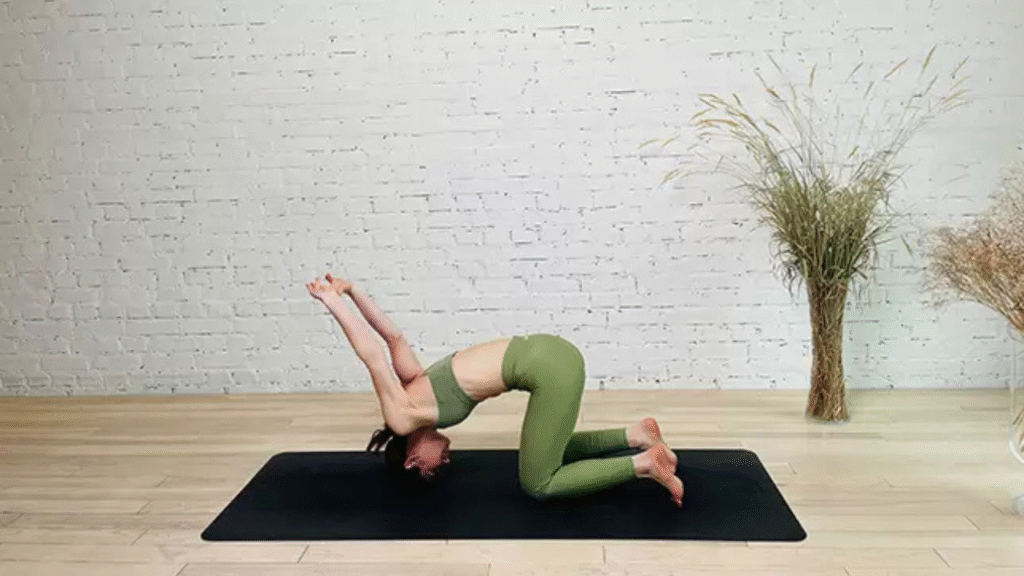
- Reclined Hero-Enter gently and with great awareness, as this is a powerful and wonderful stretch for the hamstrings and hip flexors. Placing a yoga block or a folded blanket, or a pillow under your chest can add a gentle heart-opening component to soothe your emotions.
- Supine Twist-This is one of the simplest stretches, yet it effectively releases tension from the back and helps maintain healthy alignment of the spine. A room with a lot of sitting, driving, or any activity stressing the lower back will find added value in practicing this pose.
- Plow pose-It is a tricky one to practice; for beginners, a teacher should teach this posture well. Putting the weight on your shoulders is such a wonderful release for the shoulders in stretching the neck, back, and legs. Also, it promotes blood circulation and lymphatic drainage.
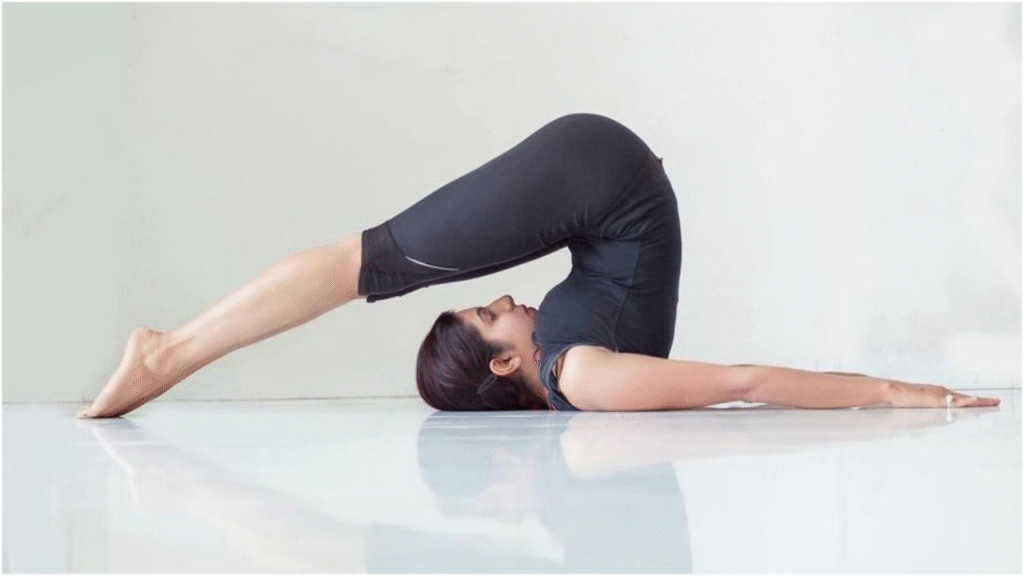
- Supine Bound Angle-This is a hip-opening supine pose that is best placed toward the end of your sequence. Take several calm, deep breaths to feel into your diaphragm fully expanding, letting go with each exhale, consciously releasing tension, and sinking deeper into the stretch.
- Happy Baby pose-Taking this pose after the rest prepares you for sleep by calming the mind, and is really good for a stretch of the inner thighs and hips. Be playful and let go of the seriousness of your day by moving your legs, rocking gently left and right to massage the spine, and to relieve tension in the lower back.
- Knees to Chest-This is a basic and accessible pose to relieve tension in the sacrum and hip flexors. Also called the wind-relieving pose, breathing deeply while holding this shape massages the abdominal organs and is beneficial for digestive issues.
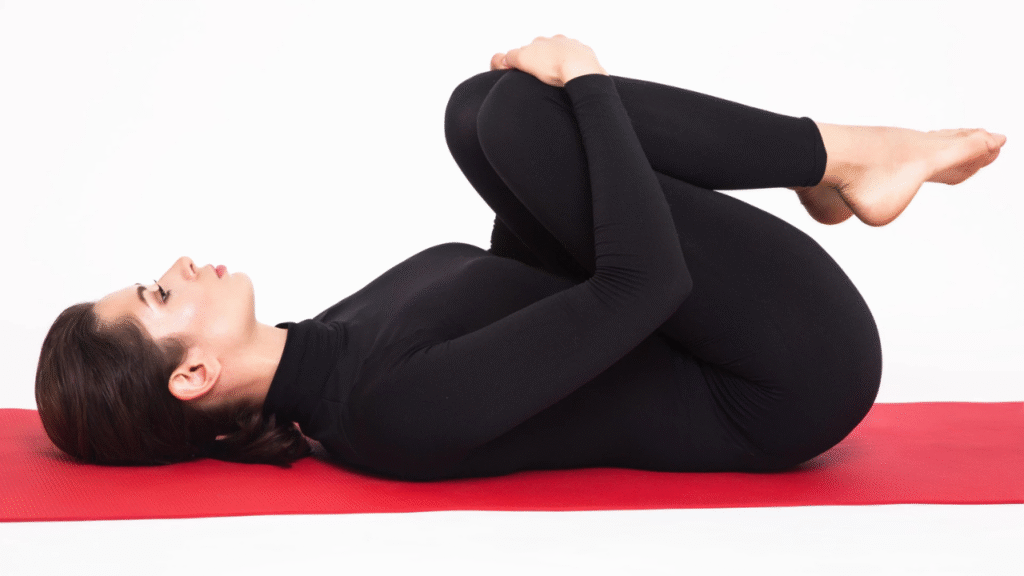
- Corpse pose-End your session doing this deeply restful pose. You might want to transition from the yoga mat to your bed, staying in the position for 10-15 breaths as you feel all tension and worries wash away from you.
Wrapping Up!
From the peculiar yogic positions that let you relax to the finest level of your body, you allow your mind to prepare for sleep. Yoga and meditation help your mind take leave of the chaotic, mundane world.
So what are you waiting for? Go ahead, embark on this journey towards peaceful sleep, and feel the difference for yourself.
Are there queries or any experiences you would wish to share? We are here to take you through every step towards a healthier tomorrow.
Conclusion:
Bedtime yoga is a safe and natural fun remedy to ease insomnia. Those few moments spent on simple stretching, deep breathing, and relaxing would train the body and mind toward relieving stress each day and preparing for refreshing deep sleep.
Yoga will help you improve your sleep without side effects, as is known from medication-induced suffering. It is about the flexibility, circulation, and mental well-being of people. Take it easy, form a habit, and listen to your body. Little time is all it takes, and in no time at all, your nights will be quieter, your sleep deeper, and your mornings fresher.
FAQs:
Can yoga help with insomnia?
Yes, gentle bedtime yoga relaxes the body, calms the mind, and improves sleep quality naturally without medication.
How long should I do bedtime yoga for the best results?
Practicing 10–15 minutes of gentle yoga nightly can significantly improve sleep patterns and reduce insomnia symptoms over time.
Do I need special equipment for bedtime yoga?
No, a yoga mat or comfortable floor space is enough. You can also use a pillow for added support.
When should I do bedtime yoga?
Do it 20–30 minutes before sleep, in a calm, dimly lit environment, to prepare your body for rest.
Can beginners try bedtime yoga for insomnia?
Absolutely. Bedtime yoga poses are gentle, easy to follow, and safe for beginners of all ages and fitness levels.
Hi, I’m veda, a professional health content writer and passionate wellness advocate at HealthTipsIndia.com
. With years of experience in writing evidence-based, reader-friendly articles, I specialize in creating content that empowers people to live healthier, more balanced lives. Whether it’s nutrition, fitness, natural remedies, or preventive healthcare, I translate complex medical concepts into actionable tips tailored for the Indian lifestyle. My goal? To make trustworthy health information accessible to everyone—one article at a time.

